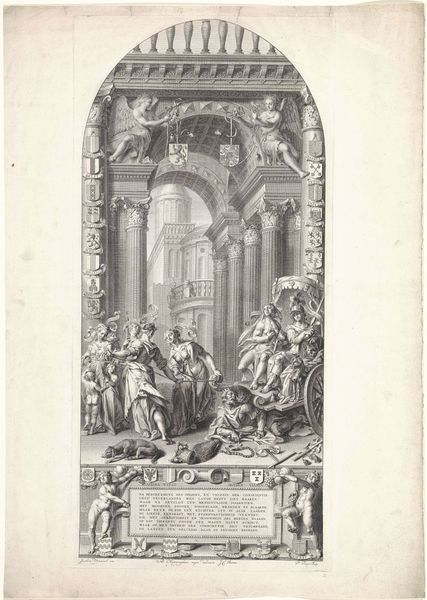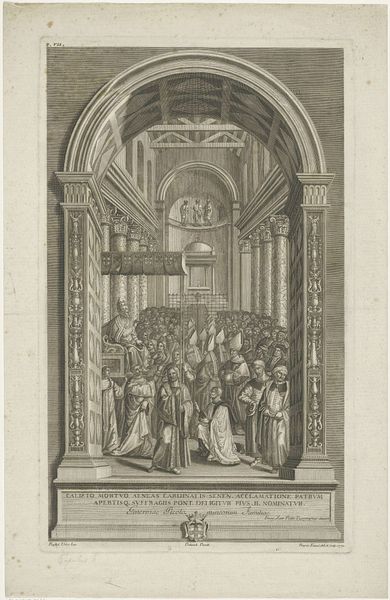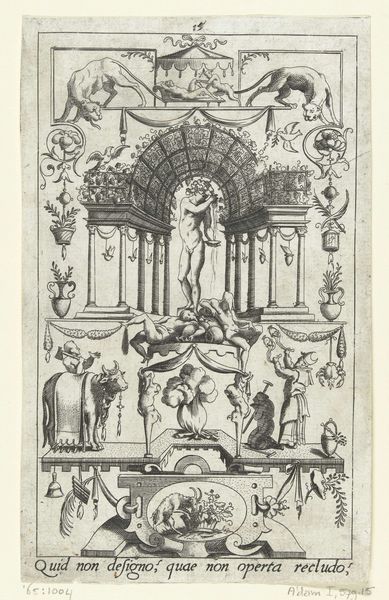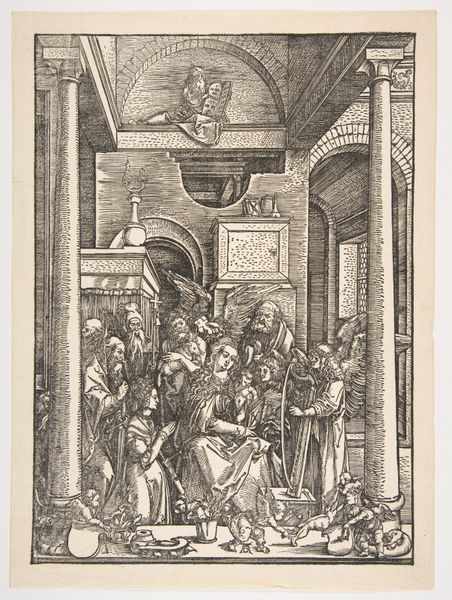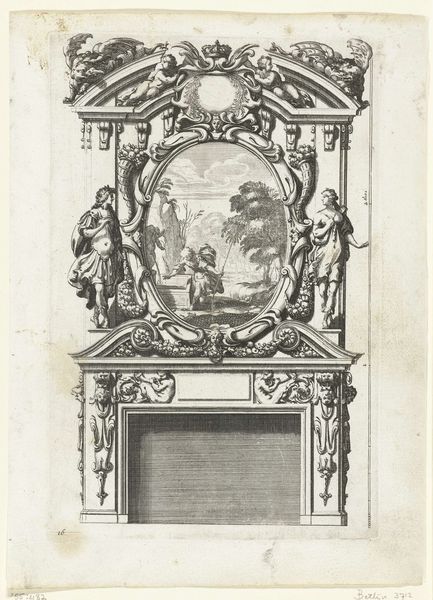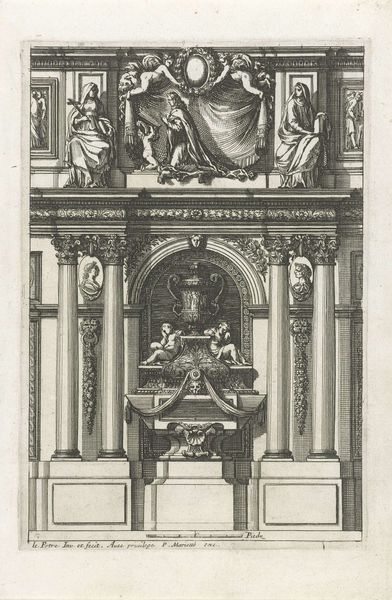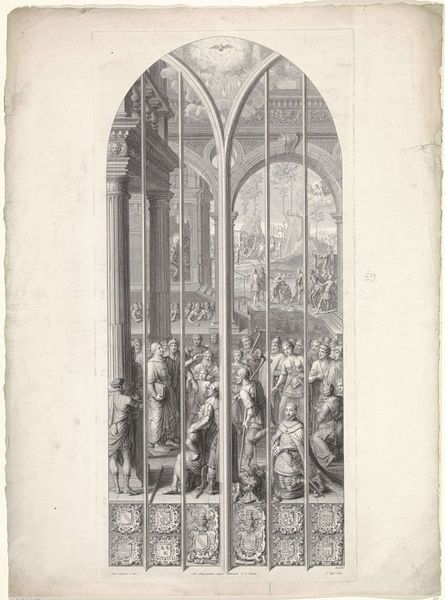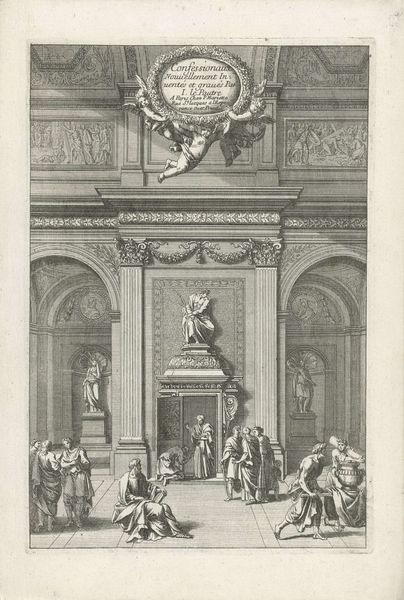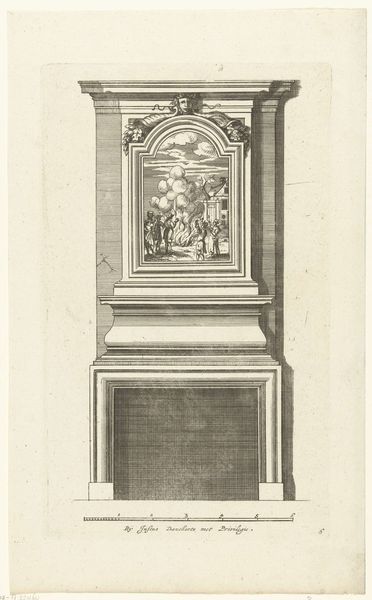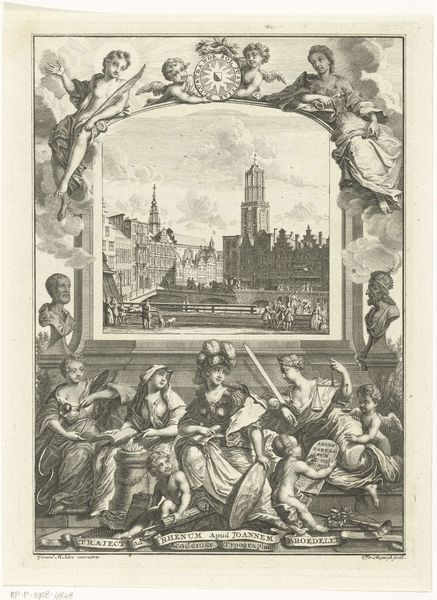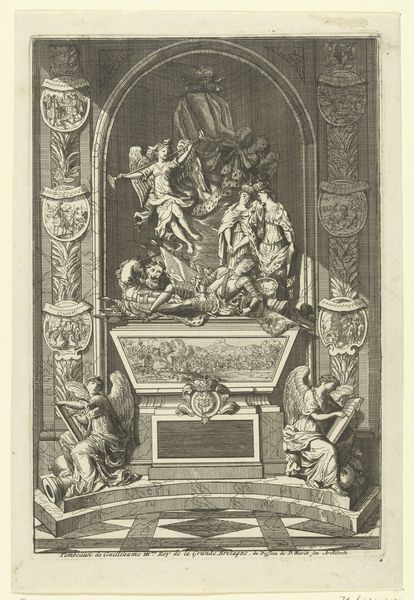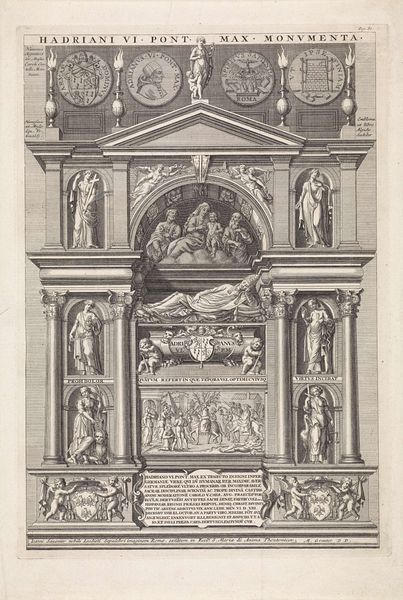
Dimensions: height 561 mm, width 335 mm
Copyright: Rijks Museum: Open Domain
Editor: So, here we have Raimondo Faucci’s engraving, "Pope Pius II Holding a Council in Mantua," made in 1771. It’s amazing how much detail he packs into this relatively small print. All those figures, the architectural space… it really pulls you in. What jumps out at you when you look at this, in terms of its historical context? Curator: What strikes me is how this print, made relatively recently, evokes a specific historical moment—the Council of Mantua in 1459—while simultaneously being embedded within a web of 18th-century social and artistic practices. Look at the elaborate architectural framework Faucci uses. How does this framing affect your perception of the historical scene depicted? Editor: I guess it kind of idealizes it, makes it feel staged almost. It's like he’s creating a window onto this important event, but also reminding us that we're viewing it through an artistic interpretation, from a specific perspective. The Baroque style also adds to that grandeur, doesn't it? Curator: Precisely. The choice to create this print in the Baroque style says a lot about the prevailing tastes and artistic values of the 18th century, even when depicting an event from centuries prior. It makes us consider, whose interests does this depiction serve? The Pope’s? The artist’s patron? A general public seeking a connection to a grand past? Editor: It's fascinating how much a single image can reveal about the social and political forces at play during its creation, and how it actively shapes historical memory. I guess this artwork proves that history is never truly objective. Curator: Indeed. Examining art through this lens allows us to unpack the complexities of how power, memory, and artistic expression intertwine. Thanks for sharing your perspective.
Comments
No comments
Be the first to comment and join the conversation on the ultimate creative platform.
